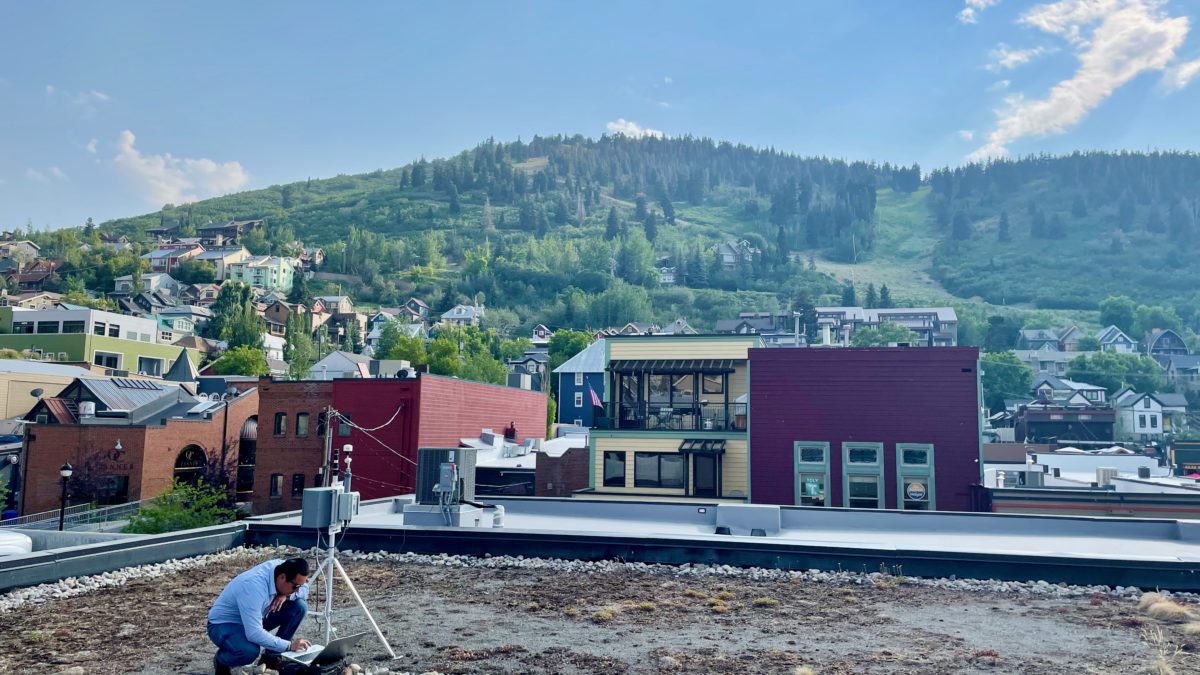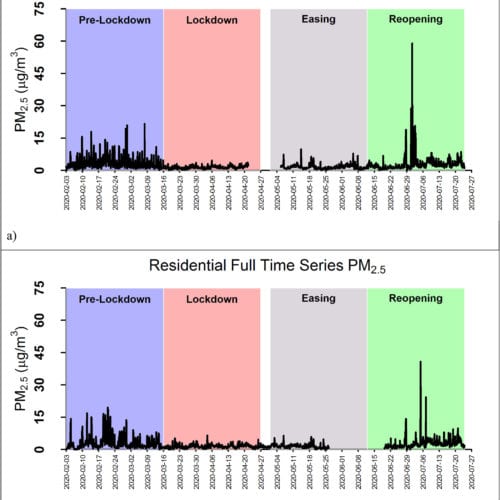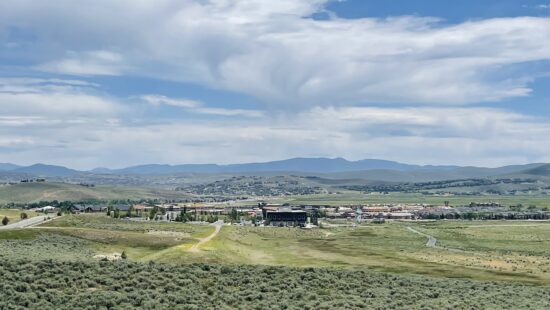Community
Researchers studied Park City’s air quality before, during, and after the lockdown

Daniel Mendoza extracts data from an air quality sensor in Old Town. Photo: Parker Malatesta
PARK CITY, Utah. — Researchers at the University of Utah recently published a study in which they measured the fluctuating air quality levels in Park City during the COVID-19 pandemic. Particulate Matter (PM2.5) is the measurement for Air Quality Indexes (AQI). Park City’s recent smoke has increased the PM2.5 and made the air ‘moderate,’ versus ‘good.’
This project was led by Daniel Mendoza, a research assistant professor in the Department of Atmospheric Sciences and visiting assistant professor in the Department of City & Metropolitan Planning.
Mendoza and his colleagues set up two air quality sensors in the city. One atop a local radio station in Old Town, and the other at the Park City Municipal Athletic & Recreation Center. The two spots were meant to measure the contrast between commercial and residential areas. “The intra-city variability is something that has not been studied in detail and can help us understand potential future emission and pollution patterns, particularly as teleworking is becoming a more viable and accepted option,” Mendoza said.
They started in 2019, unbeknownst to what lied ahead in March 2020 with the emergence of the pandemic. “We wanted to focus on Park City because of the novelty of having sensors installed there.” Before the study, neither Park City nor Summit County had any long-term air quality records.
“However, as we all know, COVID-19 happened and we had a natural experiment.” The team tracked how air quality changed as businesses shut down and people began to work from home. “The lockdown period demonstrated how low pollution levels can be and showed what the background pollution is in the area.”
Emissions declined during the lockdown in the city, with the largest decreases being in commercial areas. However, with everyone stuck at home, residential areas saw an increase in emissions. “While traditionally residential areas have had cleaner air, this was not necessarily the case during and following the lockdown period.”
When the study ended in July 2020, residential emissions had made a full rebound while commercial areas hadn’t yet returned to pre-pandemic levels.
As policymakers look to reduce emissions in the face of climate change, the study suggests that residential heating and cooling are important variables in the air quality equation.
“At the county level, it appears that pollution remains low over the entire study period,” said Tabitha Benney, associate professor of political science and a co-author of the study. “It is only when we use the inter-city perspective that such patterns become apparent. This has important implications for other urban areas as well.”
Mendoza said the study can provide a measure of guidance as to how low pollution levels can really be. While electric vehicles are commonplace in conversations about a green-energy future, Mendoza emphasized emissions from buildings. While cars make up roughly half of emissions, the turnover rate on most vehicles is 5-10 years. In a world where car makers are feeling the pressure to gear towards electric vehicles- it’s likely that vehicle emissions will drop in the coming years.
Buildings on the other hand have a turnover rate of around 50 years. According to Mendoza, buildings emissions cover somewhere between 25%-40% of total pollution. “I always ask people when is the last time someone came to your house, looked at the furnace, and told you that you need a checkup,” said Mendoza. “Many furnaces are extremely inefficient or clogged or dirty. But the reality is, no one really knows anything until it’s very broken- they’re just producing a large amount of pollution, and that’s something that many people are not aware of.”
Potential solutions that Mendoza highlighted include completely electric furnaces and HVAC systems, although he noted those are still quite unconventional today. “There are many programs that look at someone with a regular furnace and they provide either vouchers or some sort of rebates to exchange to a furnace to what we call low NOx.”
NOx stands for nitrogen oxide, which is one of the components of fine particulate matter. Low NOx furnaces are more efficient, and subsequently lower emissions.
The study was supported by the Sustainability Office of Park City and is published in Environmental Research.

Appreciate the coverage? Help keep Park City informed.
TownLift is powered by our community. If you value independent, local news that keeps Park City connected and in the know, consider supporting our newsroom.



















